As a veteran of more than half a dozen direct hurricane strikes and too many tropical storms to count, I’m no stranger to power outages. So it might surprise you that I recently decided to downgrade my generator power output and shift gears to the Generac iQ5200 Inverter Generator. In this article, I’ll explain why I made that decision and what this inverter has to offer.
Looking for more portable power options? Check out our top recommendations:
Why the Generac iQ5200 Inverter Generator?
Output
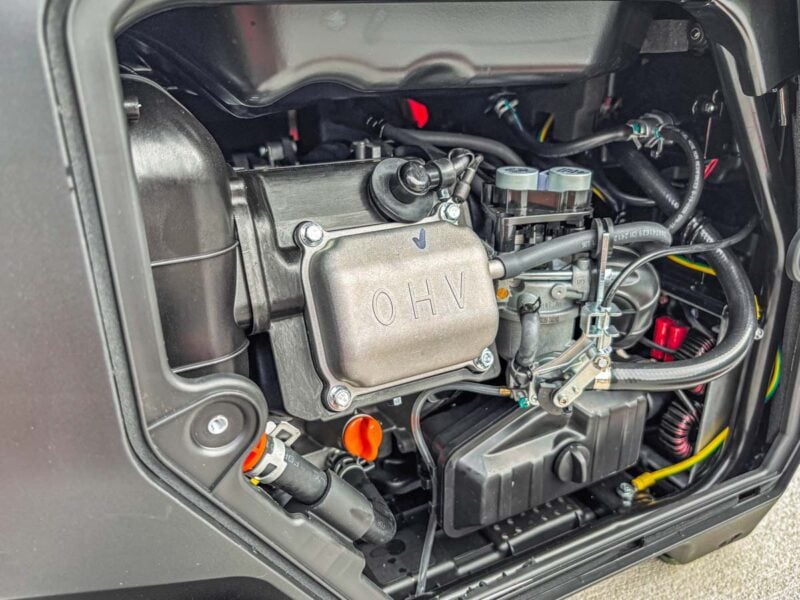
At the heart of the iQ5200 is 223cc dual-fuel engine that’s capable of using gas or propane as a fuel source. That was an important part of my decision. I keep five 5-gallon gas cans on hand during hurricane season. That’ll keep me going for several days, but for an extended outage, I also have a couple of propane tanks. As people scramble for gas before and after the storm, I can reliably get additional propane refills more easily.
Using gas, this unit can produce 3900 constant running watts and 5200 starting watts. Using propane, it’s a little lower at 4500 starting and 3700 running watts. Those are solid numbers for an inverter generator, considering some of the most popular models are in the 1800 –2500-watt range.
Obviously, you have to pick your battles anytime you’re using a generator that doesn’t power your entire home. So, what can you power with this model?
Here are some ideas:
- Full-size refrigerator
- Power tool battery chargers
- 120V corded power tools
- Window AC unit
- Washing machine
- Microwave
- Almost any electronics
Here’s the key: A 15-amp, 120V outlet provides 1800 watts of power. Since the Generac iQ5200 delivers 3900 running watts, you can run at least two of anything that plugs into a standard wall outlet at the same time. There’s a small chance you could trip the breaker if you had two high-draw devices hit their startup surge at the same time, but it’s a pretty low risk.
If you’d like to learn more, check out our deeper dive into what size generator you need.
Pure Sine Wave Energy
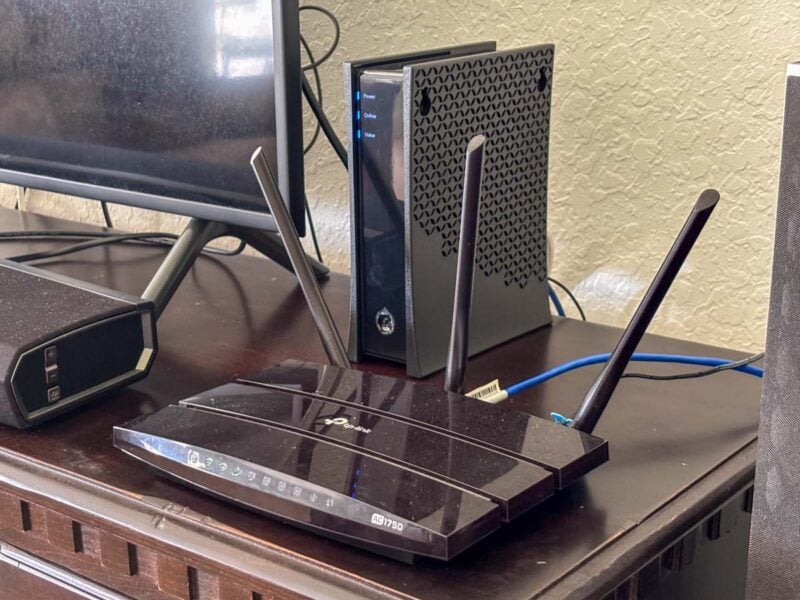
Another key in my decision was that, as an inverter, this model produces pure sine wave energy. Typical portable generators produce a square wave, sometimes called dirty energy. Inverters smooth it out into a pure sine wave, or clean energy. The point is that it won’t damage devices with sensitive electronics.
That capability is one reason battery portable power stations (AKA solar generators) are so popular. While you can’t run it inside, the iQ5200 gives you much more available power than most battery-based units. Plus, it’s a whole lot faster to add more gas than to recharge batteries.
Outlets
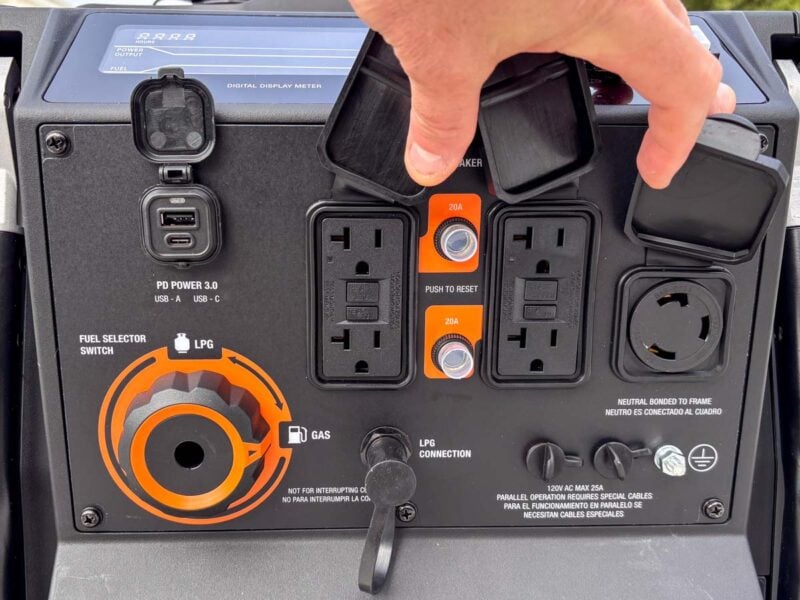
- USB-A
- USB-C
- 120V, 15A Duplex (two total outlet)
- 120V, 20A Duplex (two total outlets)
- 120V, 30A (one outlet)
Fuel Efficiency
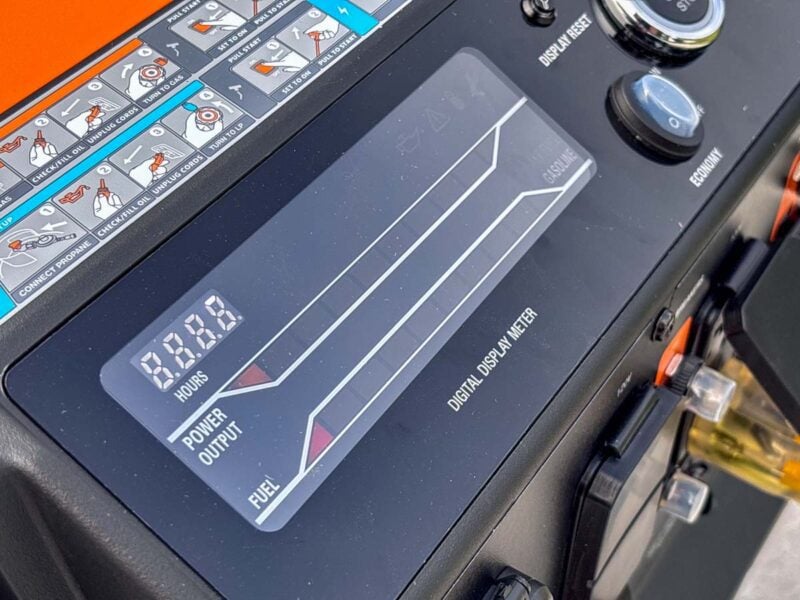
The generator I’m replacing has 6500 running watts, so why settle for less power?
In a word (well, two words), fuel efficiency.
After all the hurricanes I’ve been through, we simply don’t need 6500 watts. I don’t run a back feed into the house to run the air conditioner or major appliances. My wife and I typically keep the refrigerator plugged in to keep food fresh, we run some electronics to keep the internet up, and we recharge power tool batteries that run fans and lights. We have our charcoal-fueled Kamado Joe to cook on during outages, so we don’t use that much power.
Since I don’t come close to using all the power of that thirstier 420cc generator, I can make my fuel last longer with the iQ5200. At 50% load, the 3.2-gallon fuel tank can run 9 hours. On a 20-pound propane tank, it’ll go for 11 hours.
With all my gas cans full and two propane tanks for backup, I have 92 hours’ worth of fuel. Realistically, it’s even longer, considering my constant power needs run under 50% of the max load.
Electric Start
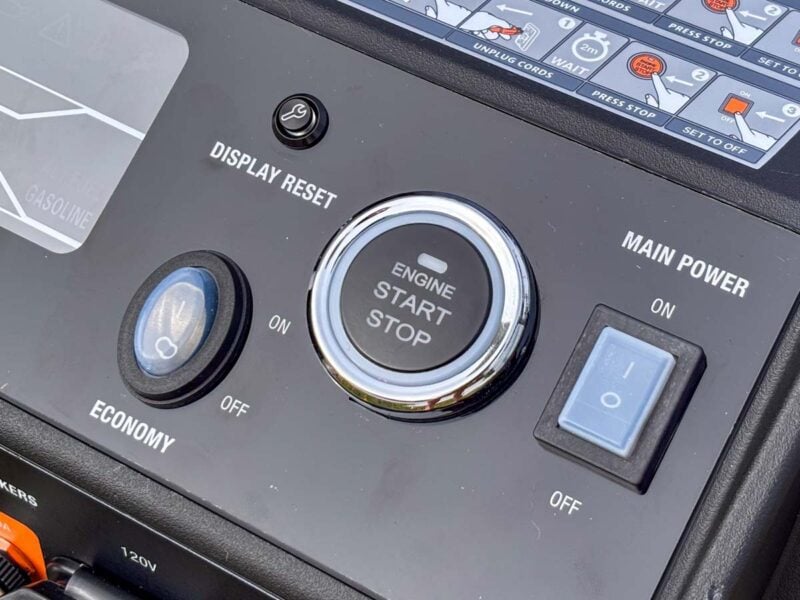
It’s one thing to pull start your generator for its quarterly run test (you are starting your generator every 90 days, right???). It’s another when you’re trying to get power running and assess damage during high-stress times after a storm. That’s why Generac’s electric start was a must-have feature for me.
It’s a pretty straightforward process: turn the selector dial to match your fuel type, flip the main power switch on, and press the start button.
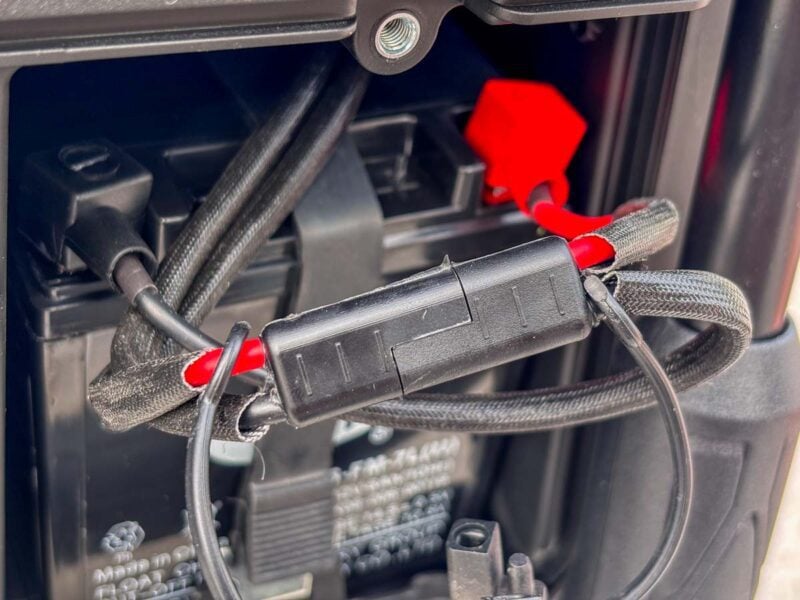
There’s just one thing to look out for initially, though. You have to connect the battery, which is normal. However, when you open the battery bay, it looks like it’s already connected. It’s not the battery terminals that need to be connected, though. There’s a mid-wire connector you need to pop together.
While it can be a little confusing if you’re not looking for it, it’s actually much easier than having to reach in there with a tool and deal with the terminals.
Portability
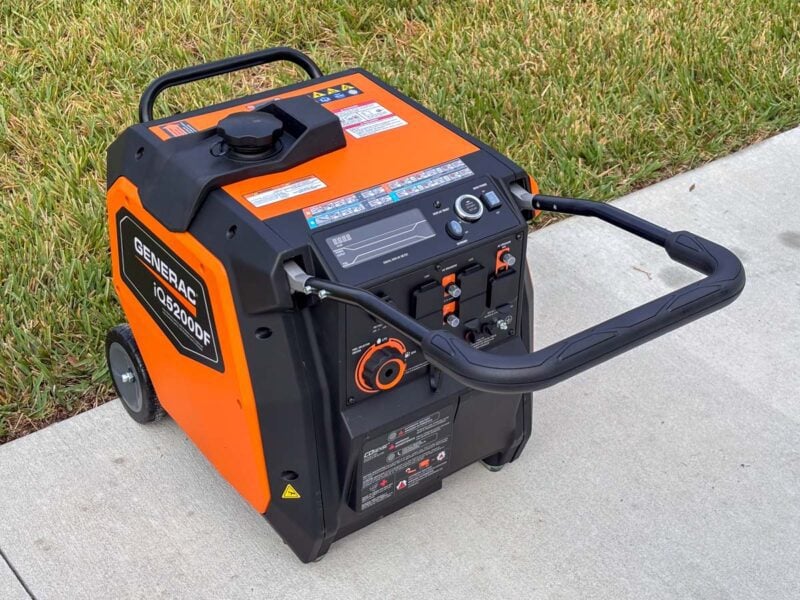
As inverters go, the Generac iQ5200 is larger than most. That’s not a surprise considering it produces more power than most. However, it has a smaller footprint than the generator I’m replacing, which gives me a little garage space back.
If you’re thinking about camping, RVing, jobsite, or other uses that require frequent moving, keep in mind that it’s 110 pounds dry. I was able to get it out of my truck on my own, but a 2-person carry is best for loading and unloading.
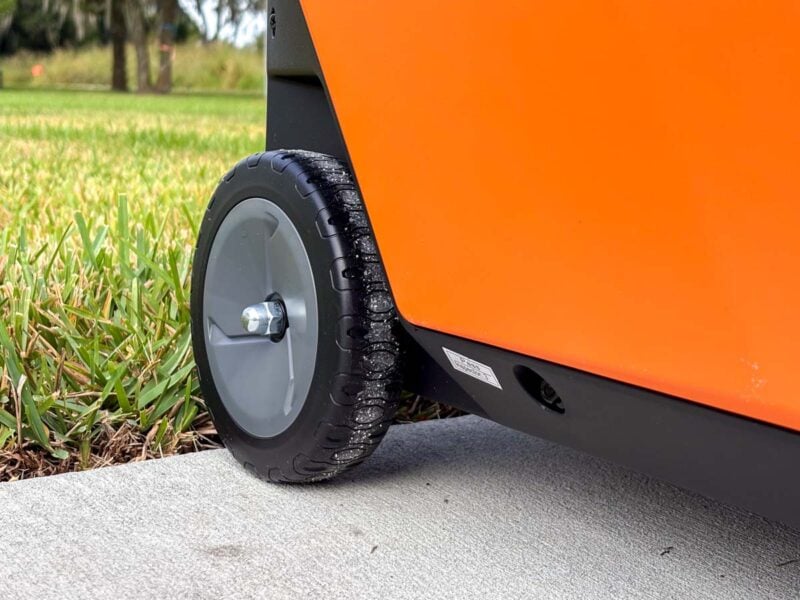
This unit comes with a preinstalled wheel kit, and there’s a metal folding handle to make rolling easier. Compared to most portable generators, the wheels are a bit smaller. It’s easy enough to roll across concrete and other hard surfaces. However, it can struggle across bare ground or grass, especially if it’s soft.
For my primary needs as an emergency power source, that’s a bit of a downside. When the time comes, my plan is to roll it from the garage, through the house, and into the backyard rather than fighting through my St. Augustine lawn.
Additional Highlights
- CoSense: Detects when carbon monoxide levels rise and automatically shuts down the engine to protect you and your family
- Intelligent Display: Shows your output wattage and fuel consumption to help you better manage your load
- Parallel Capable: Add a second iQ52000 and double your output
- Propane Hose and Connector Included: There’s no need to go out and buy them
- Eco Mode: Run at a more fuel efficient level when you’re powering devices that don’t require high startup surge
- Fully-enclosed Housing: Greatly reduces noise levels compared to open-frame generators and inverters
- Covered Outlets: Keeps rain, snow, and debris from entering the outlet when they’re not in use
Generac iQ5200 Inverter Generator Price
MSRP for the iQ5200 is $1179, but we’ve seen it for a bit less than that at most reputable retailers. Compared to similar models from other brands we recommend, that’s a competitive price.
Generac has your back with a 3-year warranty for residential use. If you’re buying it for commercial purposes, you’re covered for 1000 hours.
Should You Buy It?
The Generac iQ5200 is the perfect fit for my emergency power needs. Having a higher output than the most popular inverters, plus the benefits of pure sine wave energy, excellent fuel efficiency, and electric start is exactly what I was looking for. It’s also a great fit for RVing, food trucks, and powering small cabins.
Its power characteristics are excellent for camping and tailgating, but keep in mind that it can be a bit heavy for those activities.
The biggest limitation is that it doesn’t support a 240V connection. That’s not surprising at this power level. However, if 240V power is a must-have feature for you, this isn’t your generator.
It’s also more expensive than a standard generator with similar power. That’s what we expect from inverters, but it might be more than you’re willing to swing if you’re on a tighter budget.
Generac iQ5200 Key Specifications
- Engine 223cc
- Starting: Electric or recoil
- Fuel: Gasoline or liquid propane
- Running Watts: 3900W
- Starting Watts: 5200W
- Power Type: Pure since wave
- Fuel Capacity: 3.2 gallons
- Fuel Efficiency at 50% Load: 9 hours on gas, 11 hours on 20-lb propane tank
- Dry Weight: 111 pounds



